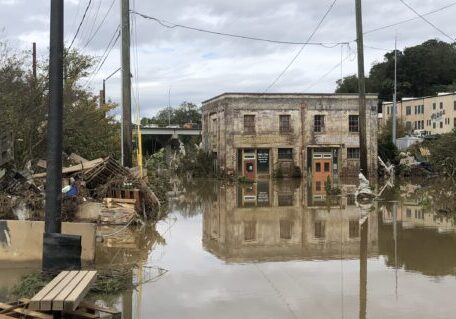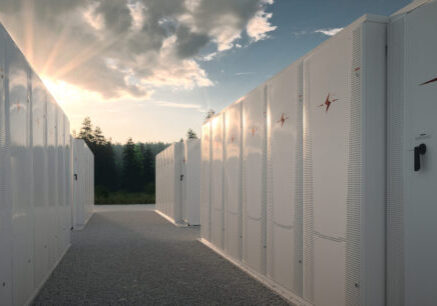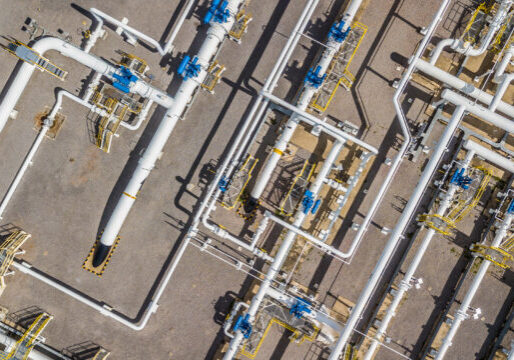November 20, 2025
Three of the biggest harms from irresponsible data center development – and what communities can do to fight back
By Eva Morgan
The unrestricted build-out of data centers across the country is threatening energy affordability, grid reliability, public health and state climate goals. A recent analysis found that at the current rate of expansion, US data centers will add an additional 44 million metric tons of CO2 to the atmosphere annually and will drain up to 1,125 million cubic meters of water per year. These risks, among others, have prompted local groups to spearhead the movement for data center reform.
Clean Energy Group hosted a recent webinar on the hazards of rapid data center development and what community groups can do to mitigate harmful data center proposals. KD Minor from the Alliance for Affordable Energy in Louisiana, Julie Bolthouse from the Piedmont Environmental Council in Virginia, and Matthew Shorraw from Physicians for Social Responsibility in Pennsylvania discussed strategies and case studies from their respective states and provided crucial information on how and where to push back.
Here are the main takeaways from the discussion:
1) Data center energy use is increasing pollution from fossil fuel power plants.
In Louisiana, the development of a Meta hyperscale data center called “Hyperion” prompted the local utility to propose three new natural gas power plants. These plans were then expedited by the Louisiana Public Service Commission, skipping the typical proposal review process. The increased gas capacity will be used to meet up to 5 gigawatts (GW) of energy demand from Hyperion, which is twice the amount of electricity used by the entire city of New Orleans on a hot summer day.
In Virginia, data centers are the main driver behind 28 GW of predicted load growth by 2050. In addition to new baseload gas plants proposed in the region, data centers also typically have backup diesel generators on site. In Virginia alone, 9,000 diesel generators are being used as backup power for data centers, spewing harmful pollutants into the air.
Pennsylvania leads the regional grid in energy exports, supplying electricity to data centers both in Pennsylvania and other states in the PJM region. The state’s energy portfolio is dominated by natural gas, with renewable energy only representing 4 percent of generation. Recent initiatives enacted by PJM and Pennsylvania continue to prioritize gas to meet data center-driven demand.
2) Data center development is raising utility bills from power plants and transmission.
The current electricity rate structure doesn’t reflect the new phenomenon of data center-driven load growth. Data centers often receive discounted energy and tax rates brokered through private negotiations and strong leverage and influence because of their size.
New transmission lines built to connect data centers to the massive amounts of energy they use are shared among all utility customers, leaving households and businesses with rising utility bills. In Virginia, transmission lines built for data centers cost $12 billion. New transmission lines can also jeopardize trails, riparian buffers, parks, and sometimes homes as utilities call on public and private rights-of-way and utilize eminent domain.
In Louisiana, Meta initially promised to pay 15 years of the capital costs of the new gas plants and some of the transmission upgrades necessary to power Hyperion. They later lowered their commitment to just four years, even though ratepayers will be paying back the costs of these investments for over 30 years.
3) Data centers use massive amounts of water.
Data centers need lots of water to cool their servers. A 100-megawatt (MW) data center can use up to 2 million gallons every day. Because the water is evaporated, this water use is considered consumptive and not returned to the water system. Water is also necessary to cool the power plants that provide electricity to data centers.
In Loudon County, Virginia, data centers make up 10 percent of all water use, and their demand spikes during the hottest months, when rivers are already running low. To cool the Hyperion hyperscale data center in Louisiana, Meta requested to withdraw a total of 5.6 million gallons of water every day from local sources.
What can you do if a data center proposal pops up in your neighborhood?
1) Work with local elected officials to pass protective zoning ordinances and policies.
Zoning ordinances are an important tool that can help shape data center development reform. These local laws can restrict siting and keep projects to specific areas, require environmental impact assessments and public benefits agreements, limit the testing and use of backup generators, ensure adequate public hearings and transparency, and require emergency preparedness plans.
Local governments can remove the “by-right” designation for zoning, meaning that there will always be a discretionary decision and public hearing when a data center is proposed, no matter what the zoning of the area is. This allows for more local involvement and for residents to have a say in the location, energy source, and operating impacts of the development.
2) Get answers to basic environmental and energy use questions.
Oftentimes, non-disclosure agreements (NDAs) prevent residents from seeking basic information about proposed or existing data centers. However, local planning staff should have to provide certain information in compliance with the Freedom of Information Act (FOIA), like which parties have signed NDAs.
Through FOIA requests, public hearings, and pressuring local officials, residents can push to get answers to crucial questions like:
- What is the size, energy use, and water use of the facility?
- What energy infrastructure is needed?
- Where will the wastewater be treated?
- How much pollution will the site generate?
- What commitments will the company make to reduce climate and ratepayer cost impacts?
3) Push for key requirements that can mitigate the most egregious harms from data center proposals.
These requirements can be made by local officials and through ratemaking processes on a state level. Targeting advocacy at these decision makers can be crucial in putting some protections in place.
- Energy: Require renewable energy and battery storage for electricity generation and backup power.
- Costs: Commitments to pay 100% of interconnection and new electricity generation costs, and security deposits for failure to perform.
- Grid Impacts: Commitments to load shifting and reliability to protect the grid against increased peak demand and the risks of quickly dropping load, and agreements to reduce demand for grid electricity when needed.
- Transparency: Information about data center contracts, rate discounts, reliability, costs, and energy and water usage are made widely available.
The future trajectory of data center growth remains in question, but what is clear is that the patterns of development we see today are unsustainable, putting communities and the climate at risk. Reforming the model for how data centers are powered, how their costs are allocated, and how siting decisions are made will be crucial for ensuring that these developments don’t come at the cost of clean air, water, affordable energy bills and a livable environment.
More resources:
- PSRPA’s Protecting Communities from Harmful Data Center Proposals and Draft Ordinances for Data Centers and Environmental Nuisance.
- Piedmont Environmental Council’s Data Center Resources for Communities, Community Leaders, and Elected Officials














